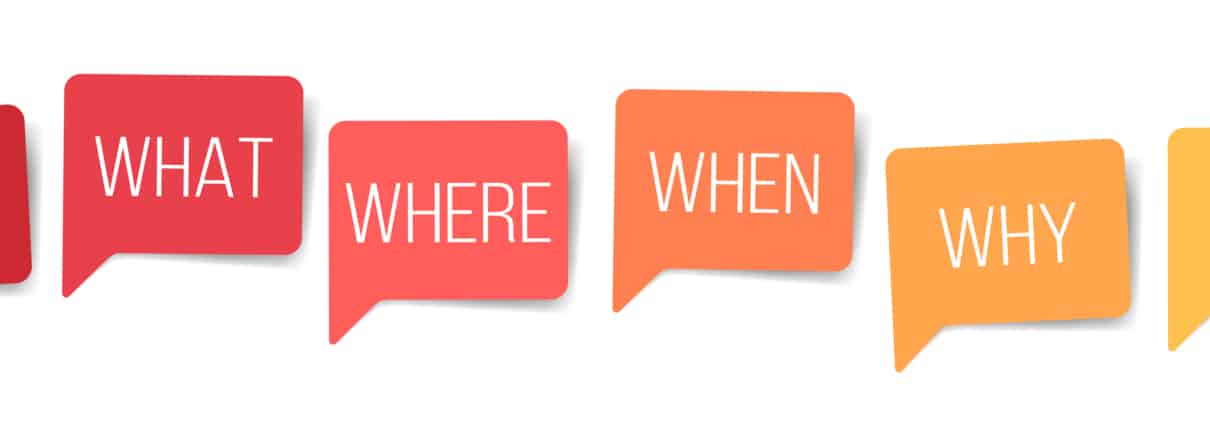“What for” Isn’t the Same as “Why”
Be Careful How You Ask Your Questions
In this space I deal with all sorts of topics that all converge around how families can do a better job transitioning their wealth and/or business to the following generations of their family.
So “communication” naturally comes up often, in a variety of different ways. One of the most important subsets of the whole communication topic is the area of “conversations” that people have.
While written communication is more easily copied, widely disseminated, and preserved, so much of what transpires verbally between people is forever lost into the ether.
But even though spoken words seemingly disappear after they’re spoken, they can leave lasting marks on one’s psyche.
“What Questions Should I Ask?”
A big part of our conversations comes down to asking questions, and that makes this area ripe for great discussion for people like me, who like to share our ideas on family topics.
But there are always plenty of subtleties involved in using questions properly, and the quality and content of the response you get will have a lot to do with how you ask your questions.
Some people think this family work is easy, and are under the mistaken belief that having a list of “the right questions” will allow them to effectively facilitate a meeting with a client’s family.
If only it were so easy. It’s not, but, there are a few things I do want to share that could prove useful.
French : “Pourquoi” versus “Pour Quoi”
The idea for this topic actually came from a LinkedIn post from a French-speaking colleague who was sharing thoughts on a recent event for business families that she had attended.
She noted something about asking 3 questions, “Pourquoi, pour quoi, and pour qui” (Why, for what, and for whom).
I’m guessing that some readers can already see where my “A-Ha” came from, noticing the fact that by simply adding a space between the “pour” and the “quoi” of the French version of “Why” gives you a very different question.
I did mention something about “subtleties earlier, didn’t I?
Back Down the Same Road Once Again
If some of this is sounding vaguely familiar, we went down some of this same path a couple of months ago in Questioning Someone vs Asking Questions, which delved into a situation where a friend and colleague realized that she needed to readjust her attitude in her own family business, and stop “questioning” people, and begin to “ask questions” instead.
The idea behind looking at the subtle differences between “why” and “what for” (or “for what”) isn’t too dissimilar.
It comes down to emphasis, and in situations where emotions may be running high, tiny tweaks in word choice and tone can make a huge difference to how your question will land with the recipient.
Some people go so far as suggesting that you never use questions that start with “why”. Let’s look at that for a moment.
Why Not Start with Why?
The simplest way for me to relate my feelings on this topic is for me to share one of the biggest keys I learned very early on in my coach training.
It was there that I was taught the importance of listening, but it wasn’t the simple and typical “let people finish, nod along with them, etc.” stuff. It was listening with an important added qualifier.
The key to being a great coach is the ability to listen without judgement.
Now think about a situation where you are speaking to someone, explaining something that you did.
When the first word coming back is “why”, that often feels like it is carrying at least a small amount of judgement, and sometimes a full load of it.
Small Changes Can Become Habits with Practice
So if you simply learn to start your questions with “what” instead of “why”, you may find you get better results.
Personally I’m not all the way there yet myself, but well on my way.
I’ve also taught myself to bite my tongue when the word “help” comes to mind, and replace it with “be a resource” whenever possible. See “The 3 R’s: Finding a ‘Responsive Reliable Resource’”
And of course I’d be remiss if I didn’t also mention one of the first such modifications I made years ago, switching from “Yes, but…!” to “Yes, AND…!”
In retrospect, that was a great place to start, and the cumulative effect of these changes has been beneficial in many of my relationships.




